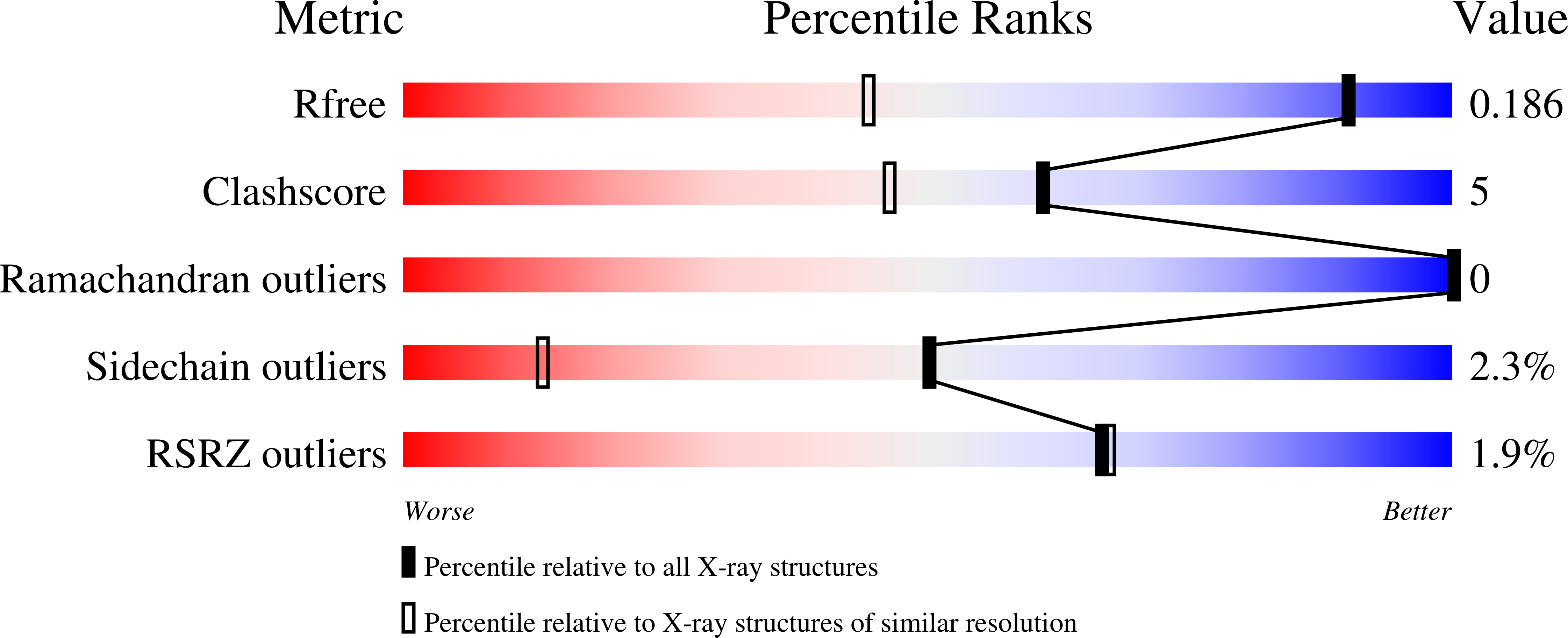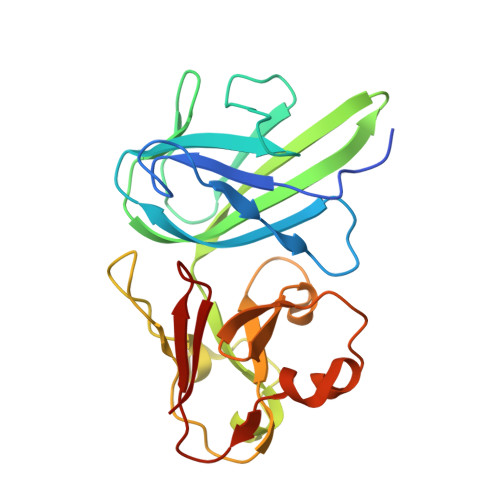Multidomain Carbohydrate-binding Proteins Involved in Bacteroides thetaiotaomicron Starch Metabolism.
Cameron, E.A., Maynard, M.A., Smith, C.J., Smith, T.J., Koropatkin, N.M., Martens, E.C.(2012) J Biol Chem 287: 34614-34625
- PubMed: 22910908
- DOI: https://doi.org/10.1074/jbc.M112.397380
- Primary Citation of Related Structures:
4FCH, 4FE9, 4FEM - PubMed Abstract:
Human colonic bacteria are necessary for the digestion of many dietary polysaccharides. The intestinal symbiont Bacteroides thetaiotaomicron uses five outer membrane proteins to bind and degrade starch. Here, we report the x-ray crystallographic structures of SusE and SusF, two outer membrane proteins composed of tandem starch specific carbohydrate-binding modules (CBMs) with no enzymatic activity. Examination of the two CBMs in SusE and three CBMs in SusF reveals subtle differences in the way each binds starch and is reflected in their K(d) values for both high molecular weight starch and small maltooligosaccharides. Thus, each site seems to have a unique starch preference that may enable these proteins to interact with different regions of starch or its breakdown products. Proteins similar to SusE and SusF are encoded in many other polysaccharide utilization loci that are possessed by human gut bacteria in the phylum Bacteroidetes. Thus, these proteins are likely to play an important role in carbohydrate metabolism in these abundant symbiotic species. Understanding structural changes that diversify and adapt related proteins in the human gut microbial community will be critical to understanding the detailed mechanistic roles that they perform in the complex digestive ecosystem.
Organizational Affiliation:
Department of Microbiology and Immunology, University of Michigan Medical School, Ann Arbor, Michigan 48109, USA.

















